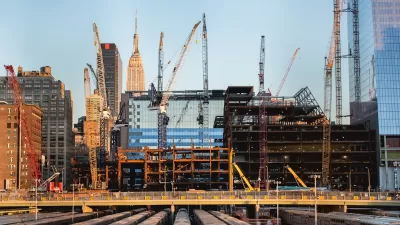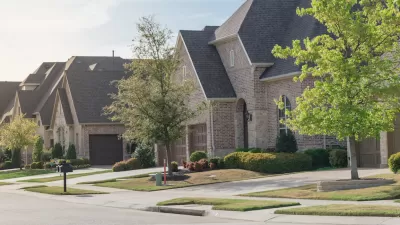Cash housing assistance in lieu of bureaucracy-laden vouchers could make affordable housing more accessible to low-income households.

The federal government is finally asking a question housing activists have been posing for decades: “What if, instead of traditional housing vouchers laden with convoluted red tape that landlords notoriously hate, low-income tenants could pay their rent with cash?” Writing in Vox, Rachel M. Cohen describes a potential new program taking shape at the Department of Housing and Urban Development.
As Cohen points out, this isn’t a new concept. “In the early 1970s, Congress successfully piloted a program to 14,000 families across 12 cities.” Now, HUD researchers want to pilot a new program to study how cash assistance might impact households’ ability to access housing.
Under current conditions, of the 25 percent of eligible households that receive federal Section 8 Housing Choice vouchers, only 60 percent are able to find housing using the voucher—in part due to source-of-income discrimination on the part of landlords.
The article outlines some of the challenges the program will have to overcome, including the logistics of distributing cash aid (which HUD isn’t allowed to do). “But if HUD isn’t allowed to distribute its vouchers as cash, foundations could step in, and then HUD could study how that goes.”
Cohen adds, “According to a HUD official involved, the federal demonstration could conceivably get off the ground in the next six to nine months, depending on how fast governments find charitable partners.”
FULL STORY: A bold new federal experiment in giving renters cash

Alabama: Trump Terminates Settlements for Black Communities Harmed By Raw Sewage
Trump deemed the landmark civil rights agreement “illegal DEI and environmental justice policy.”

Planetizen Federal Action Tracker
A weekly monitor of how Trump’s orders and actions are impacting planners and planning in America.

The 120 Year Old Tiny Home Villages That Sheltered San Francisco’s Earthquake Refugees
More than a century ago, San Francisco mobilized to house thousands of residents displaced by the 1906 earthquake. Could their strategy offer a model for the present?

LA’s Tree Emergency Goes Beyond Vandalism
After a vandal destroyed dozens of downtown LA trees, Mayor Karen Bass vowed to replace them. Days later, she slashed the city’s tree budget.

Sacramento Leads Nation With Bus-Mounted Bike Lane Enforcement Cameras
The city is the first to use its bus-mounted traffic enforcement system to cite drivers who park or drive in bike lanes.

Seattle Voters Approve Social Housing Referendum
Voters approved a corporate tax to fund the city’s housing authority despite an opposition campaign funded by Amazon and Microsoft.
Urban Design for Planners 1: Software Tools
This six-course series explores essential urban design concepts using open source software and equips planners with the tools they need to participate fully in the urban design process.
Planning for Universal Design
Learn the tools for implementing Universal Design in planning regulations.
Ada County Highway District
Clanton & Associates, Inc.
Jessamine County Fiscal Court
Institute for Housing and Urban Development Studies (IHS)
City of Grandview
Harvard GSD Executive Education
Toledo-Lucas County Plan Commissions
Salt Lake City
NYU Wagner Graduate School of Public Service





























